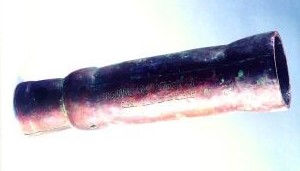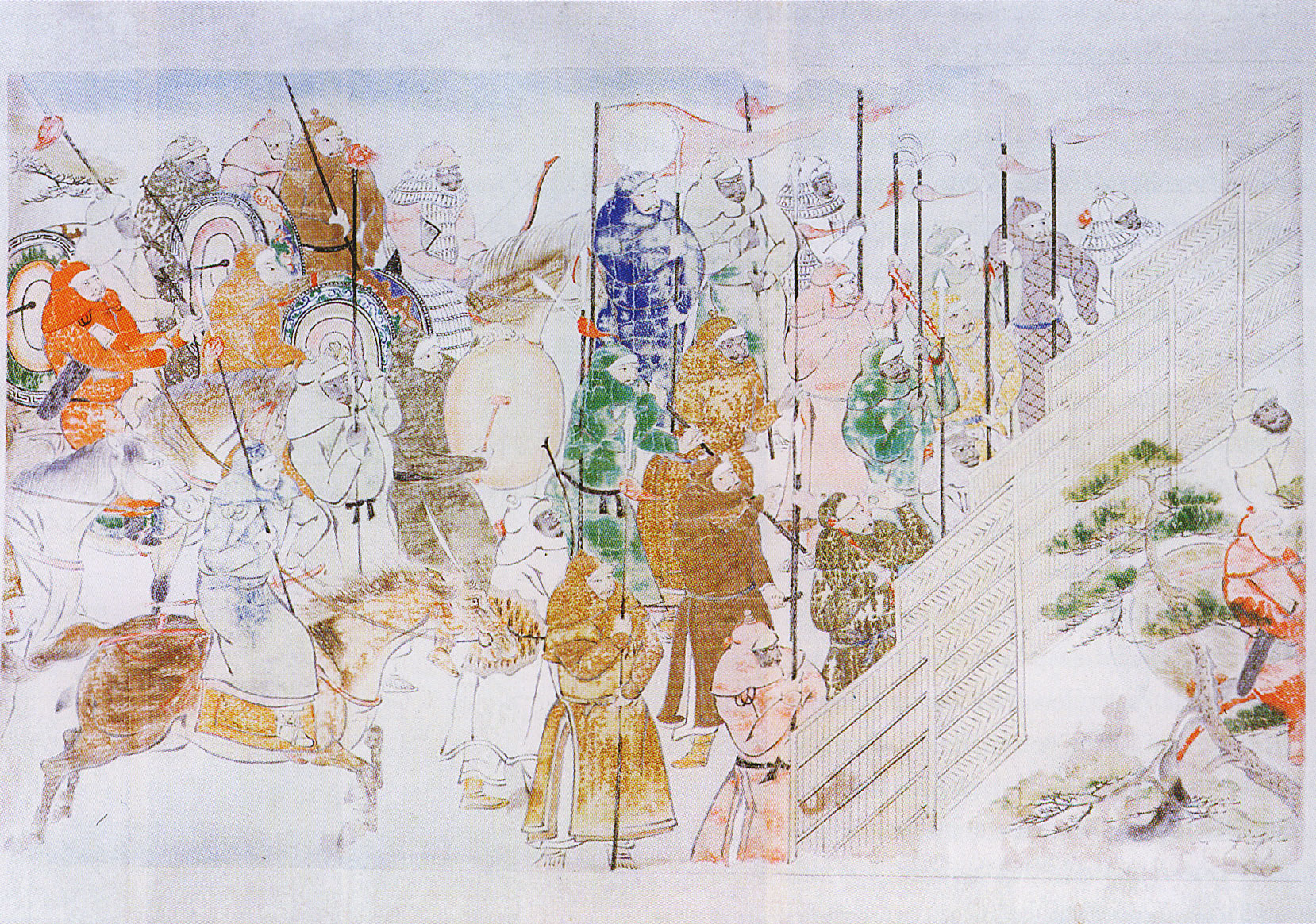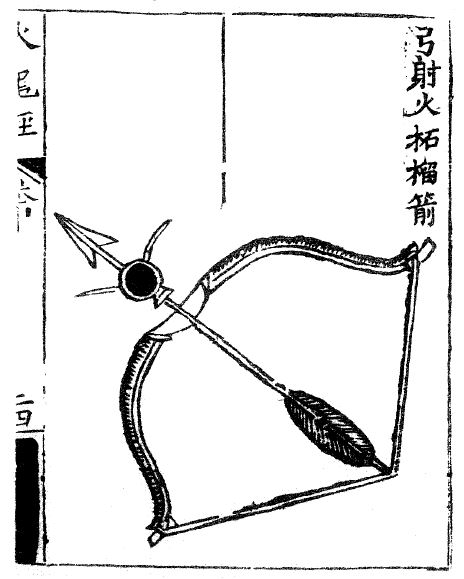|
Huochong
''Huochong'' () was the Chinese name for hand cannons. The oldest confirmed metal ''huochong'', also the first cannon, is a bronze hand cannon bearing an inscription dating it to 1298 (see Xanadu Gun, Xanadu gun). By the time of the Ming Dynasty (1368–1644) two types of ''huochong'' were in use. One was a hand held version with a wooden shaft known as a '' shouchong'' () whilst the larger ''Wankouchong'' ( — bowl-mouthed cannon) or ''Zhankouchong'' ( — cup-mouthed cannon) rested on a supporting wooden frame.''History of Ming'' Army Records Chapter Four It was invented presumably as an advance in warfare, a new way to fight. Gallery File:上都火銃.jpg, The Xanadu gun, 1298, is an example of a Wankouchong () File:Bronze cannon of 1332.jpg, Bronze cannon with inscription dated the 3rd year of the Zhiyuan era (1332) of the Yuan Dynasty (1271–1368); it was discovered at the Yunju Temple of Fangshan District, Beijing in 1935. It is similar to Xanadu gun. File:Ming 2 ... [...More Info...] [...Related Items...] OR: [Wikipedia] [Google] [Baidu] |
Xanadu Gun
The oldest extant gun bearing a date of production is the Xanadu Gun, so called because it was discovered in the ruins of Xanadu (Shangdu), the summer palace of the Yuan dynasty in Inner Mongolia, China. The Xanadu Gun is 34.7 cm in length and weighs 6.21 kg, its muzzle is flared outwards, slightly bowl-shape, and called by Chinese as 碗口铳 ( Wǎn kǒu chòng). Its dating is based on archaeological context and a straightforward inscription containing an era name and year that correspond with the Gregorian Calendar at 1298. Not only does the inscription contain the era name and date, it also includes a serial number and manufacturing information which suggests that gun production had already become systematized, or at least become a somewhat standardized affair by the time of its fabrication. The design of the gun includes axial holes in its rear which some speculate could have been used in a mounting mechanism. Like most early guns with the possible exception of the ... [...More Info...] [...Related Items...] OR: [Wikipedia] [Google] [Baidu] |
Bedil Tombak
Bedil tombak or bedil tumbak is a type of early firearm from the Nusantara archipelago. The weapon consist of a gun or small cannon mounted on a wooden pole, forming a type of weapon known as " pole gun" (''stangenbüchse'' in German). Etymology The word ''bedil'' is a term in the Malay and Javanese language meaning gun (any type of gun, from small pistol to large siege gun). The word ''tombak'' or ''tumbak'' means spear, pike, or lance. History The introduction of gunpowder-based weapons in the Nusantara archipelago can be traced back to the Mongol invasion of Java (1293), where the Chinese-Mongol troops used cannon ( 炮—"Pào") against the forces of Kediri in Daha.Schlegel, Gustaaf (1902). "On the Invention and Use of Fire-Arms and Gunpowder in China, Prior to the Arrival of European". ''T'oung Pao''. 3: 1–11.Reid, Anthony (1993). ''Southeast Asia in the Age of Commerce, 1450-1680. Volume Two: Expansion and Crisis''. New Haven and London: Yale University Press. Bet ... [...More Info...] [...Related Items...] OR: [Wikipedia] [Google] [Baidu] |
Military Of The Yuan Dynasty
The military of the Yuan dynasty (1271–1368) were the armed forces of the Yuan dynasty, a fragment of the Mongol Empire created by Kublai Khan in China. The forces of the Yuan were based on the troops that were loyal to Kublai after the Division of the Mongol Empire in 1260. At first this ''Tamma'', a frontier army drawn from all Mongol tribes for conquest of China, had no central organisation but was rather a loose collection of local warlords and Mongol princely armies. However the army was gradually reformed by Kublai Khan into a more systematic force. Army Organisation Unlike previous Chinese dynasties that strictly separated military and civilian power, the Yuan administration of military and civil affairs tended to overlap, as a result of traditional Mongol favour for military matters. This was harshly criticised by the Chinese scholar officials at the time. Military officers were allowed to pass on their positions to their sons or grandsons after death, retirement or some ... [...More Info...] [...Related Items...] OR: [Wikipedia] [Google] [Baidu] |
Gunpowder Weapons In The Song Dynasty
Gunpowder weapons in the Song dynasty included fire arrows, gunpowder lit flamethrowers, soft shell bombs, hard shell iron bombs, fire lances, and possibly early cannons known as "eruptors". The eruptors, such as the "multiple bullets magazine eruptors" (bǎi-zi lián zhū pào, 百子連珠炮), consisting of a tube of bronze or cast iron that was filled with about 100 lead balls,Needham, Volume 5, Part 7, 263-364. and the "flying-cloud thunderclap eruptor" (fēi yún pī-lì pào, 飛雲霹靂炮), were early cast-iron proto-cannons that did not include single shots that occluded the barrel (thus called "co-viative" weapons). The use of proto-cannon, and other gunpowder weapons, enabled the Song dynasty to ward off its generally militarily superior enemies—the Khitan led Liao, Tangut led Western Xia, and Jurchen led Jin—until its final collapse under the onslaught of the Mongol forces of Kublai Khan and his Yuan dynasty in the late 13th century. History Fire arr ... [...More Info...] [...Related Items...] OR: [Wikipedia] [Google] [Baidu] |
:Category:Chinese Words And Phrases
This category is for articles on words and phrases of Chinese origin. For articles on words and phrases related to a specific area of China, or to a specific spoken variant, please refer to one of the subcategories. Words A word is a basic element of language that carries an objective or practical meaning, can be used on its own, and is uninterruptible. Despite the fact that language speakers often have an intuitive grasp of what a word is, there is no conse ... Words and phrases by language {{CatAutoTOC ... [...More Info...] [...Related Items...] OR: [Wikipedia] [Google] [Baidu] |
Ming Dynasty
The Ming dynasty (), officially the Great Ming, was an imperial dynasty of China, ruling from 1368 to 1644 following the collapse of the Mongol-led Yuan dynasty. The Ming dynasty was the last orthodox dynasty of China ruled by the Han people, the majority ethnic group in China. Although the primary capital of Beijing fell in 1644 to a rebellion led by Li Zicheng (who established the short-lived Shun dynasty), numerous rump regimes ruled by remnants of the Ming imperial family—collectively called the Southern Ming—survived until 1662. The Ming dynasty's founder, the Hongwu Emperor (r. 1368–1398), attempted to create a society of self-sufficient rural communities ordered in a rigid, immobile system that would guarantee and support a permanent class of soldiers for his dynasty: the empire's standing army exceeded one million troops and the navy's dockyards in Nanjing were the largest in the world. He also took great care breaking the power of the court eunuchs and ... [...More Info...] [...Related Items...] OR: [Wikipedia] [Google] [Baidu] |
Military History Of Imperial China
A military, also known collectively as armed forces, is a heavily armed, highly organized force primarily intended for warfare. It is typically authorized and maintained by a sovereign state, with its members identifiable by their distinct military uniform. It may consist of one or more military branches such as an army, navy, air force, space force, marines, or coast guard. The main task of the military is usually defined as defence of the state and its interests against external armed threats. In broad usage, the terms ''armed forces'' and ''military'' are often treated as synonymous, although in technical usage a distinction is sometimes made in which a country's armed forces may include both its military and other paramilitary forces. There are various forms of irregular military forces, not belonging to a recognized state; though they share many attributes with regular military forces, they are less often referred to as simply ''military''. A nation's military may f ... [...More Info...] [...Related Items...] OR: [Wikipedia] [Google] [Baidu] |
Early Firearms
Early may refer to: History * The beginning or oldest part of a defined historical period, as opposed to middle or late periods, e.g.: ** Early Christianity ** Early modern Europe Places in the United States * Early, Iowa * Early, Texas * Early Branch, a stream in Missouri * Early County, Georgia Other uses * ''Early'' (Scritti Politti album), 2005 * ''Early'' (A Certain Ratio album), 2002 * Early (name) * Early effect, an effect in transistor physics * Early Records, a record label * the early part of the morning Morning is the period from sunrise to noon. There are no exact times for when morning begins (also true of evening and night) because it can vary according to one's lifestyle and the hours of daylight at each time of year. However, morning s ... See also * Earley (other) {{disambiguation, geo ... [...More Info...] [...Related Items...] OR: [Wikipedia] [Google] [Baidu] |
Wuwei Bronze Cannon
The Wuwei Bronze Cannon (武威銅火炮 — Wǔwēi tóng huǒpào) or Xi Xia Bronze cannon (西夏铜火炮 — Xīxià tóng huǒpào)Kelly DeVries, John France, Clifford J. Rogers (October 2015). Journal of Medieval Military History'. 13: 251. was discovered in 1980 and is probably the oldest and largest cannon dated to the 13th century. This 100 centimeter long, 108 kilogram bronze cannon was discovered in a cellar in Wuwei, Gansu Province. It bears no inscription, but has been dated by historians to the late Western Xia period between 1214 and 1227 through contextual evidence. The gun contained an iron ball about nine centimeters in diameter, which is smaller than the muzzle diameter at twelve centimeters, and 0.1 kilograms of gunpowder in it when discovered, meaning that the projectile might have been another co-viative. Ben Sinvany and Dang Shoushan believe that the ball used to be much larger prior to its highly corroded state at the time of discovery. While large in si ... [...More Info...] [...Related Items...] OR: [Wikipedia] [Google] [Baidu] |
Heilongjiang Hand Cannon
The Heilongjiang hand cannon or hand-gun is a bronze hand cannon manufactured no later than 1288 and is the world's oldest confirmed surviving firearm. It weighs 3.55 kg (7.83 pounds) and is 34 centimeters (13.4 inches) long. The Heilongjiang hand cannon was excavated during the 1970s in Banlachengzi, a village in Acheng District, Heilongjiang province, China. It was found alongside other bronze artifacts made in the style of the Jurchen Jin Dynasty (12th–13th century). The hand cannon was probably used in battles fought nearby in Banlachengzi in 1287 and 1288. The ''History of Yuan'' states that a Jurchen commander by the name of Li Ting led a group of soldiers equipped with hand cannons into a military camp in 1288, as part of an anti-rebellion campaign for the Yuan dynasty. The cannon currently resides at the Heilongjiang Provincial Museum in Harbin, China. Description The Heilongjiang hand cannon is long without a handle and weighs . The diameter of the interior at ... [...More Info...] [...Related Items...] OR: [Wikipedia] [Google] [Baidu] |
Hu Dun Pao
''Hu dun pao'' (虎蹲砲) is the name of two different missile weapons in Chinese history. In the Song dynasty (960–1279), it was a trebuchet and its name is translated into English as Crouching Tiger Trebuchet; in the Ming dynasty (1368–1644), the name was given to a type of bombard and it is known in English as Crouching Tiger Cannon. Trebuchet According to the Song dynasty military compendium ''Wujing Zongyao'' (published 1044), the ''hu dun pao'' is depicted as a traction trebuchet with a triangular frame. It is operated by a dedicated corps of 70 haulers, who took turns pulling the ropes attached to the trebutchet arm to send the projectile, a stone or bomb, into flight. It has a range of . The '' Annales ianuenses'', the official history of Genoa, carries drawings of ''trabuchium'', a counterweighted trebuchet with triangular supporting trusses, that Sinologist Joseph Needham considers to be derived from or related to the Chinese "Crouching Tiger Trebuchet". Similar tr ... [...More Info...] [...Related Items...] OR: [Wikipedia] [Google] [Baidu] |
Zhengde Emperor
The Zhengde Emperor (; 26 October 149120 April 1521) was the 11th Emperor of the Ming dynasty, reigned from 1505 to 1521. Born Zhu Houzhao, he was the Hongzhi Emperor's eldest son. Zhu Houzhao took the throne at only 14 with the era name Zhengde, meaning "right virtue" or "rectification of virtue". He was known for favoring eunuchs such as Liu Jin and became infamous for his childlike behavior. He eventually died at age 29 from an illness he contracted after drunkenly falling off a boat into the Yellow River. He left behind no sons and was succeeded by his first cousin Zhu Houcong. Early years Zhu Houzhao was made crown prince at a very early age and because his father did not take up any other concubines, Zhu did not have to contend with other princes for the throne. (His younger brother died in infancy.) The prince was thoroughly educated in Confucian literature and he excelled in his studies. Many of the Hongzhi Emperor's ministers expected that Zhu Houzhao would become ... [...More Info...] [...Related Items...] OR: [Wikipedia] [Google] [Baidu] |









